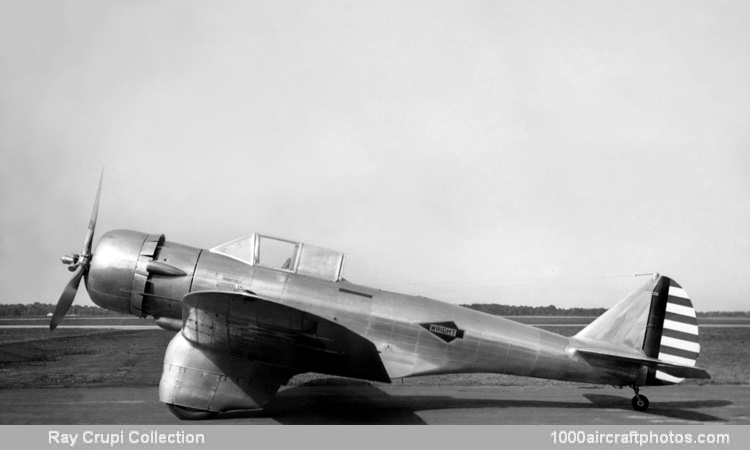10/31/2010. Remarks by Johan Visschedijk: "On Christmas Eve 1934, the mail brought to the fledgling Northrop Corporation a particularly appreciated yuletide present: official notification that the testing of their Gamma 2C and 2F had led to a War Department decision to purchase 110 examples of their attack-bomber, to be designated A-17.
While Contract AC7326 was not officially signed until March 1, 1935, the Christmas Eve letter of intent insured the future of Northrop and concluded an often frustrating eighteen-month period which had begun on July 18, 1933, when the company had delivered its fifth aircraft for evaluation by the USAAC at Wright Field, Ohio.
As the performance of its Gamma 2A and 2B exceeded substantially that of the Curtiss Shrike, the USAAC's then current attack aircraft, Northrop had decided early in 1933 to undertake as a private venture, the development of an attack version of the Gamma. Retaining the wings and trousered landing gear of the earlier aircraft, the Gamma 2C (s/n 5) was fitted with a new fuselage housing a pilot and radio operator/gunner under an enclosed canopy located further forward to improve forward visibility.
Powered by a 735 hp Wright SR-1820F-2 nine-cylinder air-cooled radial engine driving a two-blade propeller, the Gamma 2C was armed with four wing-mounted 0.30 in (7.62 mm) machine guns and one flexible 0.30 in (7.62 mm) machine gun firing either upward from the rear cockpit or downward through a ventral hatch. Up to 1,100 lb (499 kg) of bombs was carried externally on racks beneath the fuselage and center section.
Bearing the experimental registration X12291, the aircraft was first flown in the spring of 1933 before being delivered, under a bailment contract, to the USAAC for evaluation at Wright Field. These tests, however, indicated the need for several modifications and the Gamma 2C was returned to Northrop in February 1934.
When the Gamma 2C was returned to Northrop, a number of minor internal modifications were incorporated. However, a more noticeable modification was made to the vertical tail surfaces, which were changed from the original trapezoidal shape to a triangular shape with the top and rudder trailing edge rounded. In this form, the aircraft was purchased by the USAAC on June 28, 1934, under Contract AC6811 and was designated YA-13 with USAAC serial 34-27.
With the aim of improving the aircraft's performance and the pilot's forward visibility, the YA-13 was returned to Northrop in January 1935 to be re-engined with the smaller diameter 950 hp Pratt & Whitney R-1830-7 fourteen-cylinder radial engine, with a three-blade propeller. Redesignated XA-16, the aircraft was first flown in this form in March 1935. The test results indicated that the aircraft was over-powered and that production aircraft should either have a smaller engine or larger tail surfaces.
Already, a less powerful engine had been retained for the Gamma 2F, the production prototype for the A-17 series, and the XA-16 remained unchanged. Later, however, the XA-16 was fitted with a 950 hp R-1830-9. So powered, it ended its life in an aircraft mechanics' school at Roosevelt Field, Long Island."
